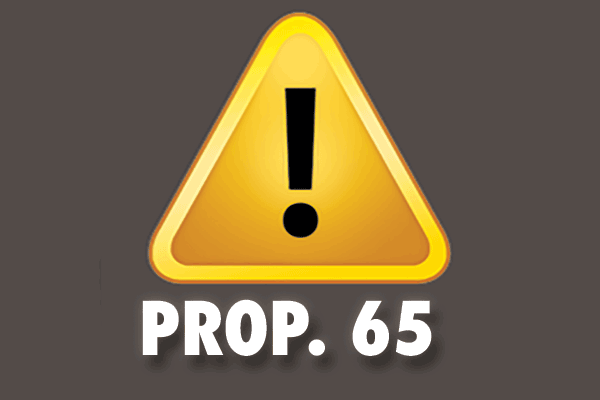Thanks to the efforts of the California Chamber of Commerce and a broad coalition of organizations, the Office of Environmental Health Hazard Assessment (OEHHA) withdrew several proposed changes to regulations addressing consumer product exposure warnings.
Specifically, OEHHA withdrew amendments that would have required online retailers to provide consumers with two Proposition 65 exposure warning labels: one at the point of purchase and a second warning label on the actual product.
OEHHA Withdraws Proposed Amendments
Earlier this year, OEHHA proposed amendments to Proposition 65 that would have changed the safe harbor warning for sales of almost every consumer product, including food and beverages, over the internet or through mobile applications, so that if a Proposition 65 warning is required for the item, it has to be provided, not only at the time of the online purchase, but also on the label of the product.
The plain language of the current safe harbor regulations does not require businesses selling online to provide an online warning and then a second on-label warning for the same exposure. Instead, the current safe harbor regulations include online warnings as one of four safe harbor methods:
• a posted sign, shelf tag or shelf sign at the point of display;
• a warning provided “via any electronic device or process”;
• a long-form label warning; or
• a short-form label warning.
OEHHA’s proposed amendments therefore essentially eliminated online warnings as a safe harbor warning method. Such an elimination would have been an extreme change to the safe harbor warning regulations with wide-ranging impacts to online retailing in California.
Increased Costs and Litigation
Since the Proposition 65 warning regulations were adopted in 2016, thousands of companies have relied upon the plain language of the safe harbor regulations for creating and implementing their Proposition 65 warning programs.
In a letter to OEHHA, the coalition pointed out that the proposed changes would have forced businesses to invest significant time and resources into changing their Proposition 65 warning programs, again.
Adding a requirement for on-label warnings would have a severe impact on production, distribution and manufacturing costs. Unless a business was willing to provide an on-label warning to consumers outside of California, which the law does not require and which may cause confusion or alarm among those consumers, the business would have needed to create two lines of products with separate stock keeping unit (SKU) designations so that online retailers would know which were destined for California and which for other jurisdictions. This would have increased expenses and complexity in the supply chain and would have added to consumer costs.
The changes also would have created an unfair advantage for physical retailers, given that consumers at brick-and-mortar stores can receive a single product warning, either at the point of purchase, like a shelf sign, or on the product label.
“There is no reason to treat online purchasers any differently,” the coalition stated.
Moreover, OEHHA’s withdrawn amendments would have spurred frivolous litigation about whether warnings are “clear and reasonable” if they do not comport with the proposed amendments’ two-warning approach for online sales, but are otherwise compliant with Proposition 65. Companies are already experiencing an unprecedented surge in Proposition 65 enforcement actions from private enforcers.
By rescinding its proposed amendments to Proposition 65, OEHHA in effect agreed with the coalition that there was no justifiable policy reason to eliminate a safe harbor warning method relied upon by thousands of companies selling into California.


